Neuromuscular junction (NMJ) is the synapse which serves as the point where the nerve communicates with the muscles to stimulate contraction and movement.
Certain clinical conditions require that this function is blocked, like in surgeries and other diagnostic procedures.
NMJ-blocking agents block nerve stimulation on muscle cells and cause paralysis of the muscles directly without total CNS depression and its many systemic effects. They affect the normal functioning of the muscles by interfering on the normal processes that occur at the junction.
Table of Contents
- NMJ Blockers: Generic and Brand Names
- The Neuromuscular Junction
- NMJ-Blocking Agents
- Nondepolarizing NMJ Blockers
- Depolarizing NMJ Blockers
- Nursing Considerations
- Practice Quiz: Neuromuscular Junction Blocking Agents
- Recommended Resources
- See Also
- References and Sources
NMJ Blockers: Generic and Brand Names
Here is a table of commonly encountered NMJ blockers, their generic names, and brand names:
- Nondepolarizing NMJ Blockers
- atracurium (Tracrium)
- cisatracurium (Nimbex)
- pancuronium (Pavulon)
- rocuronium (Zemuron)
- vecuronium (Norcuron)
- Depolarizing NMJ BLockers
- succinylcholine (Anectine, Quelicin)
The Neuromuscular Junction
NMJ is the point at which a motor neuron communicated with a skeletal muscle fiber. The end result is muscular contraction.
Sarcomere, the functional unit of a muscle, is made up of light (actin) and dark (myosin) filaments arranged in orderly stacks that give the sarcomere a striped appearance.
Normal muscle function involves the arrival of a nerve impulse at the motor nerve terminal, followed by the release of neurotransmitter acetylcholine (Ach) into the synaptic cleft.
NMJ-Blocking Agents
NMJ-blocking agents can either be nondepolarizing or depolarizing.
Both types are used to cause paralysis for the performance of surgical procedures, endoscopic diagnostic procedures, or facilitation of mechanical ventilation.
Nondepolarizing NMJ Blockers
- Nondepolarizing NMJ blockers are agents that act as antagonists to Ach at the NMJ and prevent depolarization of muscle cells.
- Curare, the first nondepolarizing NMJ-blocker to be discovered, was first used by hunters as a poison applied on arrow tips and spears to kill animals through respiratory muscle paralysis. It was safe for humans because poison was destroyed by cooking process and gastric acid. It was first purified for clinical use as the NMJ blocker tubocurarine.
Therapeutic Action
The desired and beneficial actions of nondepolarizing NMJ blockers are as follows:
- It occupies the muscular cholinergic receptor site, preventing the Ach from reacting with the receptor.
- It does not cause activation of muscle cells and flaccid paralysis occurs as a result.
Indications
Nondepolarizing NMJ blockers are indicated for the following medical conditions:
- Serve as an adjunct to general anesthetics during surgery to prevent interference of reflex muscle movements on surgical procedures.
- Facilitate mechanical intubation by preventing resistance to passing of the endotracheal tube.
- Facilitate electroconvulsive therapy (ECT) when intense skeletal muscle contractions as a result of electric shock could cause the patient broken bones or other injury.
Here are some important aspects to remember for indication of nondepolarizing NMJ blockers in different age groups:
Children
- Require very careful monitoring and support after the use of NMJ blockers.
- Administered by anesthetists who are skilled in their use and with full support services available.
- Nondepolarizing NMJ blockers are preferable because of lack of muscle contraction with its resultant discomfort on recovery.
Adults
- Close monitoring for full return of muscle function is vital.
- For pregnant and lactating women, NMJ blockers are only used when the benefit to the mother outweighs the potential risk to the fetus or neonate.
Older adults
- More likely to have toxic levels of the drug related to changes in metabolism and excretion
- Meticulous skin care is important to prevent skin breakdown.
- May require longer monitoring and regular orienting and reassuring.
Pharmacokinetics
Here are the characteristic interactions of nondepolarizing NMJ blockers and the body in terms of absorption, distribution, metabolism, and excretion:
| Route | Onset | Peak | Duration |
| IV | 4-6 min | N/A | 120-180 min |
| T1/2: 89-161 min Metabolism: tissues Excretion: urine (unchanged) |
Contraindications and Cautions
The following are contraindications and cautions for the use of nondepolarizing NMJ blockers:
- Allergy to nondepolarizing NMJ blockers. Prevent hypersensitivity reactions.
- Myasthenia gravis. Aggravated by blocking the ACh cholinergic receptors
- Renal, hepatic disease. Interferes with metabolism or excretion of drugs, leading to toxic effects
- Family or personal history of malignant hyperthermia. Characteristics include extreme muscle rigidity, severe fever, acidosis, and death. It can occur with use of nondepolarizing NMJ blockers.
- Pulmonary, CV diseases. Exacerbated by paralysis of respiratory muscles and resulting changes in perfusion and respiratory function.
- Altered fluid and electrolyte imbalance. Can affect membrane stability and subsequent muscular function
- Lactation. Potential adverse effects to the baby.
Adverse Effects
Use of nondepolarizing NMJ blockers may result to these adverse effects:
- Profound and prolonged muscle paralysis
- Respiratory paralysis characterized by depressed respiration, bronchospasm, and apnea.
- Prolonged drug use: GI paralysis, constipation, vomiting, regurgitation, aspiration
- Pressure ulcers may develop because patient loses reflex muscle movement that protects the body.
- Hyperkalemia may occur as a result of muscle membrane alterations.
Interactions
The following are drug-drug interactions involved in the use of nondepolarizing NMJ-blockers:
- Halothane: membrane-stabilizing effect and greatly enhanced nondepolarizing NMJ blockers-induced paralysis
- Aminoglycoside antibiotics: increased neuromuscular blockage
- Calcium-channel blockers: greatly enhanced paralysis
- Cholinesterase inhibitors: decreased effectiveness of nondepolarizing NMJ blockers
- Xanthines: Reversal of the neuromuscular blockage
- Alkaline solutions: Precipitate formation
Depolarizing NMJ Blockers
- Depolarizing NMJ blockers are agents that act as agonists to Ach at the NMJ, causing stimulation of the muscle cell and staying on receptor site, preventing it from repolarizing and results to muscle paralysis with the muscle in a constant, contracted state.
- Succinylcholine is the only depolarizing NMJ blocker.
Therapeutic Action
The desired and beneficial action of depolarizing NMJ blockers is:
- It attaches to the ACh-receptor site on the muscle cell, causing a prolonged depolarization of the muscle.
Indications
Depolarizing NMJ blockers are indicated for the following medical conditions:
- As adjunct to general anesthesia
- To facilitate endotracheal intubation
- To induce skeletal muscle relaxation during surgery or mechanical ventilation
Here are some important aspects to remember for indication of nondepolarizing NMJ blockers in different age groups:
Children
- Require very careful monitoring and support after the use of NMJ blockers.
- Administered by anesthetists who are skilled in their use and with full support services available.
- Succinylcholine is preferred when a very short-acting, rapid-onset blocker is needed.
Adults
- Close monitoring for full return of muscle function is vital.
- Feelings of muscle pain and discomfort after procedure are expected with use of succinylcholine.
- For pregnant and lactating women, NMJ blockers are only used when benefit to the mother outweighs the potential risk to the fetus or neonate.
Older adults
- More likely to have toxic levels of the drug related to changes in metabolism and excretion
- Meticulous skin care is important to prevent skin breakdown.
- May require longer monitoring and regular orienting and reassuring.
Pharmacokinetics
Here are the characteristic interactions of nondepolarizing NMJ blockers and the body in terms of absorption, distribution, metabolism, and excretion:
| Route | Onset | Peak | Duration |
| IV | 30-60 s | N/A | 4-6 min |
| T1/2: 2-3 min Metabolism: tissues Excretion: urine (unchanged) |
Contraindications and Cautions
Contraindications and cautions for the use of depolarizing NMJ blockers are the same for nondepolarizing NMJ blockers:
- Allergy to depolarizing NMJ blockers. Prevent hypersensitivity reactions.
- Myasthenia gravis. Aggravated by blocking the ACh cholinergic receptors
- Renal, hepatic disease. Interferes with metabolism or excretion of drugs, leading to toxic effects
- Family or personal history of malignant hyperthermia. Characteristics include extreme muscle rigidity, severe fever, acidosis, and death. It can occur with use of nondepolarizing NMJ blockers.
- Pulmonary, CV diseases. Exacerbated by paralysis of respiratory muscles and resulting changes in perfusion and respiratory function.
- Altered fluid and electrolyte imbalance. Can affect membrane stability and subsequent muscular function
- Lactation. Potential adverse effects to the baby.
Adverse Effects
Use of depolarizing NMJ blockers may result to these adverse effects:
- Profound and prolonged muscle paralysis
- Respiratory paralysis characterized by depressed respiration, bronchospasm, and apnea.
- Malignant hyperthermia: massive muscle contraction, sharply elevated body temperature, and severe acidosis. Dantrolene is the treatment for this reaction.
Interactions
The following are drug-drug interactions involved in the use of depolarizing NMJ-blockers:
- Halothane: membrane-stabilizing effect and greatly enhanced nondepolarizing NMJ blockers-induced paralysis
- Aminoglycoside antibiotics: increased neuromuscular blockage
- Calcium-channel blockers: greatly enhanced paralysis
- Cholinesterase inhibitors: decreased effectiveness of nondepolarizing NMJ blockers
- Xanthines: Reversal of the neuromuscular blockage
- Alkaline solutions: Precipitate formation
Nursing Considerations
Here are important nursing considerations when administering NMJ blockers:
Nursing Assessment
These are the important things the nurse should include in conducting assessment, history taking, and examination:
- Assess for the mentioned cautions and contraindications (e.g. drug allergies, hepatic and renal impairment, etc.) to prevent any untoward complications.
- Perform a thorough physical assessment (e.g. weight, neurological status, vital signs, heart sounds, bowel sounds, etc.) to establish baseline data before drug therapy begins, to determine effectiveness of therapy, and to evaluate for occurrence of any adverse effects associated with drug therapy.
- Inspect skin color and evidence of pressure areas or breakdown which could result when movement ceases.
- Monitor laboratory test results (e.g. liver and renal function tests) to determine possible need for a reduction in dose and evaluate for toxicity.
Nursing Diagnoses
Here are some of the nursing diagnoses that can be formulated in the use of this drug for therapy:
- Impaired gas exchange related to depressed respirations
- Impaired skin integrity related to immobility caused by action of drugs
- Impaired verbal communication related to effects on muscle activity
- Risk for injury related to loss of muscle control
Implementation with Rationale
These are vital nursing interventions done in patients who are taking NMJ blockers:
- Prepare emergency equipment to maintain airway and provide mechanical ventilation if needed.
- Provide skin care to site of administration to reduce risk of skin breakdown.
- Monitor patient temperature for prompt detection and treatment of malignant hyperthermia.
- Ensure that a cholinesterase inhibitor is readily available to overcome excessive neuromuscular blockade caused by nondepolarizing NMJ blockers.
- Provide comfort measures to help patient tolerate drug effects.
- Provide safety measures (e.g. adequate lighting, raised side rails, etc.) to prevent injuries.
- Educate client on drug therapy to promote understanding and compliance.
Evaluation
Here are aspects of care that should be evaluated to determine effectiveness of drug therapy:
- Monitor patient response to therapy (adequate muscle paralysis).
- Monitor for adverse effects (e.g. respiratory depression, hypotension, bronchospasms, GI slowdown, skin breakdown, etc).
- Evaluate patient understanding on drug therapy by asking patient to name the drug, its indication, and adverse effects to watch for.
- Monitor patient compliance to drug therapy.
Practice Quiz: Neuromuscular Junction Blocking Agents
Quiz time!
1. The functional unit of muscles.
A. Myomere
B. Sarcomere
C. Actin and myosin
D. Neuromuscular junctions
2. Which of the following is a contraindication in the use of nondepolarizing NMJ blockers?
A. Systemic Lupus Erythematosus
B. Gunshot wound
C. Hypokalemia
D. All of the above
3. The only depolarizing NMJ blocker.
A. Succinylcholine
B. Vecuronium
C. Acetylcholine
D. Both A and C
4. This drug should not be combined with depolarizing NMJ blockers they will reverse the blocking effect of NMJ blockers.
A. Calcium-channel blockers
B. NSAIDs
C. Xanthines
D. Aminoglycosides
5. What should be available in the bedside to overcome the excessive neuromuscular blockade of nondepolarizing NMJ blockers?
A. Acetylcholine agonists
B. Cholinesterase inhibitors
C. Halothane
D. Isoflurane
Answers & Rationale
1. Answer: B. Sarcomere.
Sarcomere, the functional unit of a muscle, is made up of light (actin) and dark (myosin) filaments arranged in orderly stacks that give the sarcomere a striped appearance.
2. Answer: C. Hypokalemia.
Altered fluid and electrolyte imbalance can affect membrane stability and subsequent muscular function so it is a contraindication in the use of NMJ blockers.
3. Answer: A. Succinylcholine
Depolarizing NMJ blockers are agents that act as agonists to Ach at the NMJ, causing stimulation of the muscle cell and staying on receptor site, preventing it from repolarizing and results to muscle paralysis with the muscle in a constant, contracted state.
4. Answer: C. Xanthines.
They cause reversal of the neuromuscular blockage. Calcium-channel blockers enhance the paralysis while aminoglycoside antibiotics increase the blockage effect of NMJ blockers.
5. Answer: B. Cholinesterase inhibitors.
They reduce the effectiveness of nondepolarizing NMJ blockers.
Recommended Resources
Our recommended nursing pharmacology resources and books:
Disclosure: Included below are affiliate links from Amazon at no additional cost from you. We may earn a small commission from your purchase which will help support us. Thank you! For more information, check out our privacy policy.
Pharm Phlash! Pharmacology Flash Cards #1 BEST SELLER!
Test-yourself review cards put critical clinical information for nearly 400 of the top generic medications at your fingertips. And, you can count on them for accuracy, because each card is based on content from Davis’s Drug Guide for Nurses. Increase your test scores in pharmacology class.
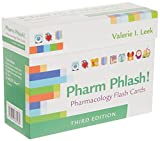
Focus on Pharmacology (8th Edition)
Focus on Nursing Pharmacology makes challenging concepts more approachable. Engaging learning features cultivate your clinical application, critical thinking and patient education capabilities. This updated 8th edition builds on your knowledge of physiology, chemistry and nursing fundamentals to help you conceptualize need-to-know information about each group of drugs.
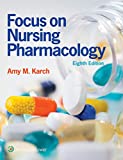
Pharmacology Made Incredibly Easy (Incredibly Easy! Series®)
Nursing pharmacology guide offers step-by-step guidance so you can grasp the fundamentals in enjoyable Incredibly Easy style. This is the perfect supplement to class materials, offering solid preparation for NCLEX® as well as a handy refresher for experienced nurses. Colorfully illustrated chapters offer clear, concise descriptions of crucial nursing pharmacology concepts and procedures.
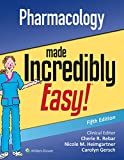
Lehne’s Pharmacology for Nursing Care (11th Edition)
The Eleventh Edition of Lehne’s Pharmacology for Nursing Care provides a thorough understanding of key drugs and their implications for nursing care. This text, written by renowned nursing educators, helps you comprehend and apply pharmacology principles. A clear and engaging writing style simplifies complex concepts, making even the most challenging pharmacology content enjoyable. We recommend this book if you want a comprehensive nursing pharmacology guide.
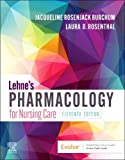
Nursing Drug Handbook
Nursing2023 Drug Handbook delivers evidence-based, nursing-focused drug monographs for nearly 3700 generic, brand-name, and combination drugs. With a tabbed, alphabetical organization and a “New Drugs” section, NDH2023 makes it easy to check drug facts on the spot.
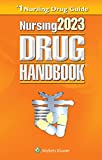
Pharmacology and the Nursing Process
The 10th edition of Pharmacology and the Nursing Process offers practical, user-friendly pharmacology information. The photo atlas contains over 100 unique illustrations and photographs depicting drug administration techniques. Updated drug content reflects the most recent FDA drug approvals, withdrawals, and therapeutic uses.
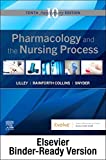
Mosby’s Pharmacology Memory NoteCards: Visual, Mnemonic, and Memory Aids for Nurses
The 6th edition of Mosby’s Pharmacology Memory NoteCards: Visual, Mnemonic, & Memory Aids for Nurses incorporates illustrations and humor to make studying easier and more enjoyable. This unique pharmacology review can be utilized as a spiral-bound notebook or as individual flashcards, making it ideal for mobile study.
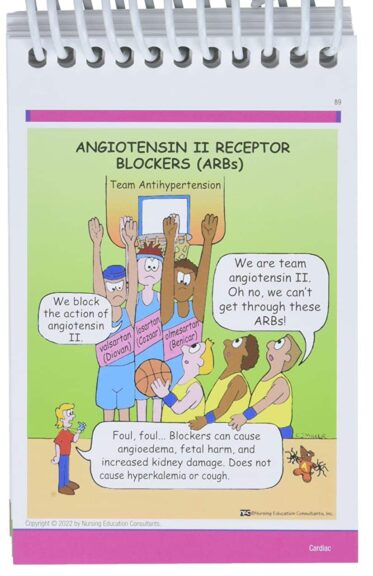
See Also
Here are other nursing pharmacology study guides:
- Nursing Pharmacology – Study Guide for Nurses
Our collection of topics related to nursing pharmacology - Pharmacology Nursing Mnemonics & Tips
These nursing mnemonics aim to simplify the concepts of pharmacology through the use of a simple, concise guide. - Generic Drug Name Stems Cheat Sheet
Learn about these generic drug name stems to help you make sense of drugs easier! - Common Drugs and Their Antidotes
A guide to drug antidotes that nurses should be familiar about. - IV Fluids and Solutions Guide & Cheat Sheet
Get to know the different types of intravenous solutions or IV fluids in this guide and cheat sheet. - Drug Dosage Calculations NCLEX Practice Questions (100+ Items)
Care to take the challenge? This quiz aims to help students and registered nurses alike grasp and master the concepts of medication calculation.
Drug Guides NEW!
Individual drug guides and nursing considerations for the most common medications used in nursing pharmacology:
- Acetaminophen (Tylenol)
- Aspirin
- Atorvastatin (Lipitor)
- Enoxaparin (Lovenox)
- Furosemide (Lasix)
- Gabapentin
- Hydromorphone (Dilaudid)
- Lisinopril
- Metoprolol
- Morphine
Gastrointestinal System Drugs
Respiratory System Drugs
- Antihistamines
- Bronchodilators and Antiasthmatics
- Decongestants
- Expectorants and Mucolytics
- Inhaled Steroids
- Lung Surfactants
Endocrine System Drugs
- Adrenocortical Agents
- Antidiabetic Agents
- Glucose-Elevating Agents
- Hypothalamic Agents
- Insulin
- Parathyroid Agents: Bisphosphonates, Calcitonins
- Pituitary Drugs
- Sulfonylureas
- Thyroid Agents
Autonomic Nervous System Drugs
- Adrenergic Agonists (Sympathomimetics)
- Adrenergic Antagonists (Sympatholytics)
- Anticholinergics (Parasympatholytics)
- Cholinergic Agonists (Parasympathomimetics)
Immune System Drugs
Chemotherapeutic Agents
- Anthelmintics
- Anti-Infective Drugs
- Antibiotics
- Antifungals
- Antineoplastic Agents
- Antiprotozoal Drugs
- Antiviral Drugs
Reproductive System Drugs
Nervous System Drugs
- Antidepressants
- Antiparkinsonism Drugs
- Antiseizure Drugs
- Anxiolytics and Hypnotic Drugs
- General and Local Anesthetics
- Muscle Relaxants
- Narcotics, Narcotic Agonists, and Antimigraine Agents
- Neuromuscular Junction Blocking Agents
- Psychotherapeutic Drugs
Cardiovascular System Drugs
References and Sources
References and sources for this pharmacology guide for Neuromusclar Junction Blockers:
- Karch, A. M., & Karch. (2011). Focus on nursing pharmacology. Wolters Kluwer Health/Lippincott Williams & Wilkins. [Link]
- Katzung, B. G. (2017). Basic and clinical pharmacology. McGraw-Hill Education.
- Lehne, R. A., Moore, L. A., Crosby, L. J., & Hamilton, D. B. (2004). Pharmacology for nursing care.
- Smeltzer, S. C., & Bare, B. G. (1992). Brunner & Suddarth’s textbook of medical-surgical nursing. Philadelphia: JB Lippincott.
